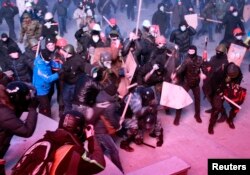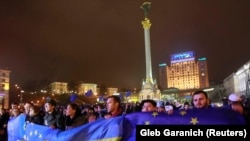For what it's worth, here's what the Ukrainian open-source investigative site InformNapalm has to say about Beric:
The aggressor’s sniper pairs consist of both regular servicemen of the Russian Armed Forces and mercenaries trained in Russian military camps. However, it is necessary to distinguish the “propaganda snipers” from the real ones, who are there to perform actual combat missions. Both these categories have a role in the hybrid war and are dangerous in their own way.
There are several mercenaries who front as snipers in the Russian propaganda stories. One of them is the Serb Dejan Berić, call sign Deki. He constantly features in the propaganda stories distracting attention from the regular Russian military personnel present in Donbas. Four independent competent sources in Serbia have informed us that Berić is just a recruiter and a propagandist posing for the cameras, while real combat missions are performed by other mercenaries.
Berić, being a much hyped media character, helps to misinform and distract attention from the real operatives. The same role was performed by the “separatist warlords” Givi and Motorola; however when they got carried away playing tough leaders and lost their value for Moscow, these “heroes” were eliminated quickly and efficiently. The media activity of the Serbian “sniper” is a good example of military cunning, achieving both propaganda and disinformation objectives with a single asset.
Read more here.
Here's an item from our news desk:
Amnesty International: Five Years After Euromaidan, Justice For The Victims 'Still Not Even In Sight'
Amnesty International says the Ukrainian criminal justice system has "resisted and obstructed justice" when dealing with the human rights violations committed by police during the Euromaidan protests five years ago.
Colm O Cuanachain, senior director at the office of the London-based group's secretary-general, made the comment on February 19, which marked the fifth anniversary of the protest movement’s worst day of violence.
Three months of peaceful protests in Kyiv, known as the Euromaidan, forced Moscow-friendly President Viktor Yanukovych to flee to Russia in February 2014.
More than 100 people were killed and 2,500 injured in clashes with security forces, some of them shot dead by snipers.
The death toll included at least 13 police officers, according to the Ukrainian authorities.
As of the end of 2018, the Ukrainian Prosecutor-General’s Office had identified 441 suspects, most of them former law enforcement officers, according to Amnesty.
The rights watchdog said that the cases of 288 individuals had been sent to court, 52 of them resulting in court decisions.
Out of 48 convictions, "only nine custodial sentences were handed down," it added, and not one of those jailed was a former police officer.
Justice for most victims who suffered at the hands of Ukrainian police "is still not even in sight," Cuanachain said. "Promises were made, strong words were said by the post-Yanukovych authorities, but time and facts speak volumes."







